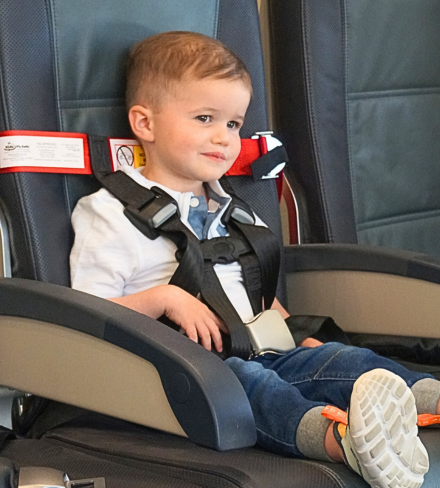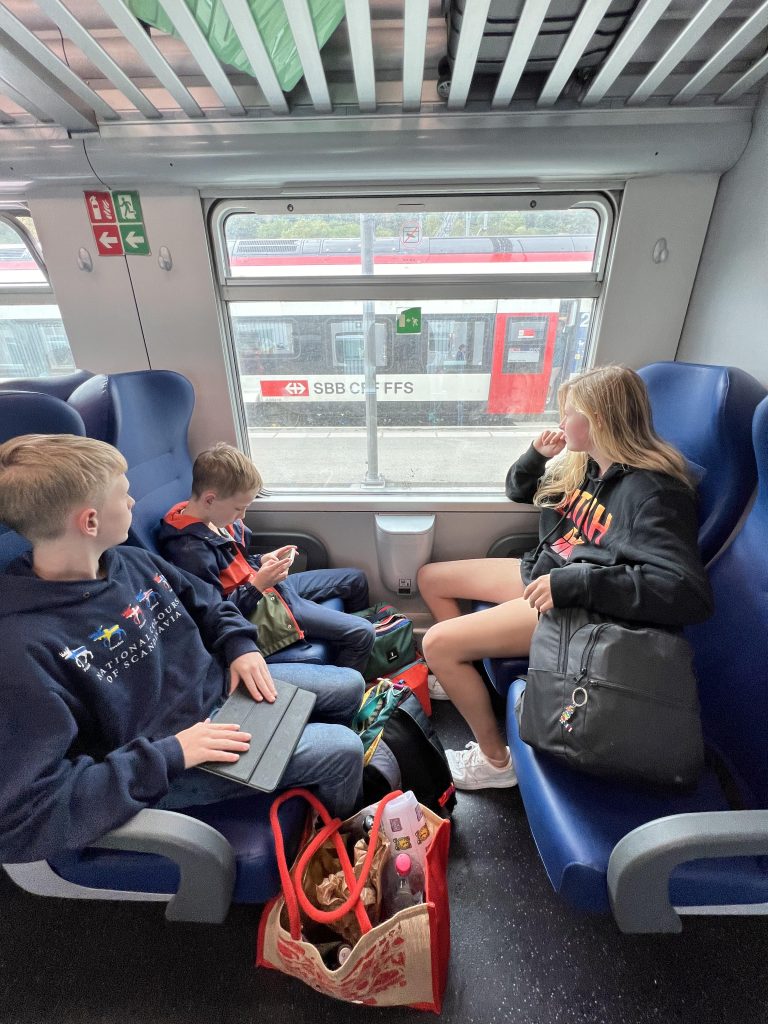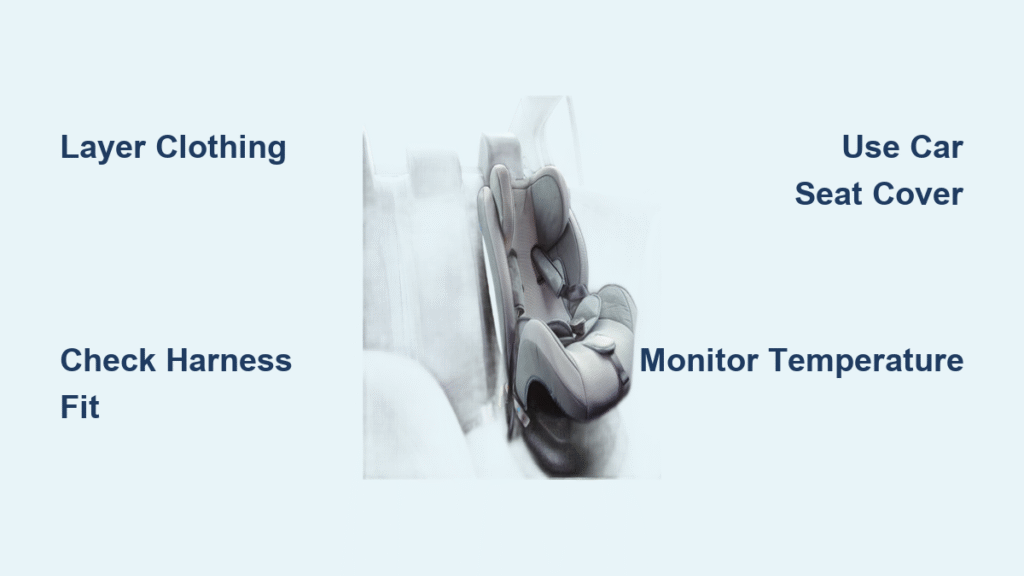Traveling with a toddler can be an adventure full of excitement, but it often comes with the headache of lugging around a bulky car seat. If you’re wondering how to travel with toddler without car seat, you’re not alone—many parents face this dilemma during flights, train rides, or short taxi hops where a car seat feels impractical. The good news is there are safe, legal alternatives that prioritize your child’s security while keeping things manageable. A quick fix? Opt for approved child harnesses or airline bassinets for air travel, which can provide restraint without the full car seat setup.
In this comprehensive guide, we’ll go beyond the basics to cover everything from legal requirements and preparation steps to mode-specific strategies for planes, trains, buses, and more. You’ll get actionable tips, safety checklists, and pro advice to ensure smooth travels, so by the end, you’ll feel confident navigating trips with your little one minus the car seat hassle. Whether it’s a family vacation or an unexpected journey, these solutions will help you focus on the fun instead of the stress.
Understanding Legal and Safety Requirements for Toddler Travel
Before diving into the how-to’s, it’s crucial to know the rules—skipping a car seat isn’t about cutting corners but ensuring compliance and safety. In most countries, including the US, EU, and Canada, children under 2 are often exempt from car seat mandates in certain scenarios like taxis or rideshares, but laws vary by transport mode and location. For vehicles, toddlers typically need a car seat or booster until age 4-8, depending on height and weight. Always check local regulations via resources like the National Highway Traffic Safety Administration (NHTSA) website or your destination’s transport authority.
Safety-wise, the American Academy of Pediatrics (AAP) strongly recommends car seats for all road travel, but acknowledges alternatives for non-car scenarios. Warning: Never hold your toddler on your lap in a moving vehicle—it’s extremely dangerous due to inertia forces in crashes. For air travel, the FAA allows children under 2 to ride on a parent’s lap, but a separate seat with an approved restraint is ideal. Prioritize FAA-certified harnesses (like the CARES Child Aviation Restraint System) over nothing at all. If you’re traveling internationally, review airline policies and customs rules to avoid surprises at the gate.
Preparing for Your Trip: Essentials Without a Car Seat
Preparation is your best defense against travel chaos with a toddler. Start by assessing your itinerary—will you need ground transport, or is it all air and rail? Pack light but smart, focusing on items that enhance safety and comfort without relying on a car seat.
What You’ll Need: Packing List
Use this table to organize your essentials. Aim to keep your carry-on under 22 pounds for easy mobility.
| Item | Quantity | Specifications |
|---|---|---|
| Portable Child Harness | 1 | FAA-approved like CARES system for planes; lightweight, under 1 lb |
| Travel Stroller or Carrier | 1 | Compact foldable stroller (e.g., Uppababy G-Lite) or baby carrier (e.g., Ergobaby) for walking between gates |
| Snacks and Entertainment | Multiple | Non-messy pouches, tablets with kid apps, noise-canceling headphones for toddlers |
| ID and Documentation | 1 set | Child’s birth certificate, passport; airline waiver forms if lap child |
| Comfort Items | As needed | Favorite blanket, pacifier, change of clothes; motion sickness bands if prone |
| First-Aid Kit | 1 small | Includes bandages, fever reducer (age-appropriate dosing), travel sickness meds |
Time estimate: Spend 30-45 minutes packing the night before to avoid last-minute rushes. Double-check airline baggage policies—many allow free stroller gate-checking.
Safety and Health Prep
Consult your pediatrician 1-2 weeks before travel, especially for vaccinations or motion sickness advice. Hydrate your toddler well (aim for 4-6 ounces of water per hour in-flight) and practice short “mock trips” at home to familiarize them with routines. If flying, book a bulkhead seat for extra legroom if possible, and arrive 2-3 hours early to handle security without stress.
Step-by-Step Guide: Traveling by Air Without a Car Seat

Air travel is one of the most common scenarios for ditching the car seat, as toddlers under 2 can often fly as lap children. However, for safety, consider buying an extra seat and using a harness—it’s 40% safer per FAA stats. Here’s how to do it right.
Phase 1: Booking and Pre-Flight Planning
- Choose Your Airline Wisely: Opt for family-friendly carriers like Delta or Southwest, which offer free lap infant tickets (typically 10-25% of adult fare). Confirm their policy on restraints—most allow FAA-approved harnesses but not car seats for lap kids.
- Select Seats: Book an aisle or window in economy for easy access. Avoid the very back near lavatories to minimize noise.
- Prepare Documentation: For international flights, get a child travel consent form if traveling without both parents. Print airline policies on child restraints.
Time estimate: 15-20 minutes online booking; do this 4-6 weeks in advance for best rates.
Phase 2: At the Airport and Boarding
- Security Screening: Use family lanes at TSA checkpoints. Remove your toddler from any carrier, but keep snacks and liquids (under 3.4 oz) handy. Baby carriers speed through—wear your child through metal detectors.
- Gate Time: Let your toddler burn energy in play areas. Board early with pre-boarding for families to settle in.
- Restraint Setup: Once aboard, secure the CARES harness if using one—it installs like a seatbelt across the chest and over the shoulders. For lap holding, keep them on your lap facing you during taxi, takeoff, and landing.
Important: During turbulence, hold your toddler firmly or use the harness. Never use the seatbelt around both of you—it’s ineffective.
Phase 3: In-Flight Management
Keep routines: Nurse or feed during ascent/descent to ease ear pressure. Use a pacifier or bottle. Entertainment like downloaded shows or books prevents meltdowns. Change diapers in the lavatory using fold-down changing tables.
Time estimate: Flight duration varies, but plan 10-15 minutes for setup/teardown per leg.
Post-Flight Testing and Arrival
Deplane last if needed for space. At your destination, arrange car-free transport like shuttles or rideshares that allow lap-holding (check local laws—e.g., Uber in the US permits it for under 2s). Test your setup on a short practice flight if possible.
If issues arise, like harness discomfort, switch to a soft baby carrier for the flight’s calmer parts.
Traveling by Train or Public Transit Without a Car Seat

Trains and buses offer more space than planes, making car seat-free travel easier. Amtrak and European rails often don’t require seats for young kids, but safety is key.
Step-by-Step for Train Travel
- Booking: Purchase a child ticket (usually half-price under 5). Request family seating near restrooms.
- Boarding: Use a lightweight stroller for platforms; fold and store in overhead racks.
- During the Ride: Let your toddler roam supervised in lounge cars, but keep them close during stops. Use a harness if available for added security on bumpy tracks.
- Breaks: Schedule stops for playtime—trains often have dining cars with kid options.
Time estimate: 5-10 minutes to settle in; full trip management depends on duration (e.g., 2-4 hours for regional routes).
For buses or subways: Hold your toddler on your lap or use a carrier. Avoid rush hour crowds. In cities like New York or London, public transit is stroller-friendly with priority seating.
Handling Taxis and Rideshares
Short hops? Many jurisdictions (e.g., California) exempt taxis from car seat laws for under 2s. Request a larger vehicle via UberXL. Warning: For longer rides, rent a car seat from services like BabyQuip at your destination—it’s safer than risking fines (up to $250 in some states).
General Tips for Managing Your Toddler on the Go
Beyond transport specifics, focus on comfort to make traveling with toddler without car seat enjoyable. Dress in layers for temperature changes, and pack a “busy bag” with quiet toys like magnetic books or sensory toys. Monitor for dehydration or fatigue—toddlers tire quickly. If jet-lagged, stick to home routines for meals and naps.
For multi-mode trips (e.g., fly then train), use apps like Rome2Rio to map car-free routes. Budget extra time—toddlers add 20-30% to transit durations.
Pro Tips for Stress-Free Toddler Travel
Here are 7 expert strategies to elevate your game:
– Choose Off-Peak Times: Travel mid-week or red-eye flights when crowds are thinner, reducing overwhelm for your toddler.
– Incorporate Movement Breaks: Every 1-2 hours, find a spot for stretching or play—apps like Google Maps highlight parks near stations.
– Common Mistake to Avoid: Don’t overload on screens early; save them for cranky moments to maintain battery life and attention spans.
– Optimize with Tech: Use white noise apps or travel sound machines to mimic home sleep environments on noisy transports.
– Pack Multi-Use Items: A nursing cover doubles as a privacy blanket or sunshade in carriers.
– Health Hack: Probiotic gummies can ease tummy troubles from new foods or altitude changes—consult your doctor first.
– Long-Term Maintenance: After each trip, review what worked; build a reusable travel kit to streamline future adventures.
These tips can cut travel stress by half, based on parent forums like TripAdvisor communities.
When to Seek Professional Help
While most trips are DIY, call in experts if your toddler has special needs (e.g., medical conditions requiring oxygen on planes) or if you’re navigating complex itineraries. Signs include severe motion sickness unresponsive to meds or behavioral challenges needing therapy input. Look for pediatric travel clinics via the International Society of Travel Medicine—they offer customized advice.
Costs: Consultations run $100-200; specialized services like airport assistance (e.g., Delta’s Sky Priority) are often free for families. Check warranties on gear like harnesses—most cover defects for 1-2 years.
FAQ
Q: Is it legal to travel by plane with a toddler on my lap without a car seat?
A: Yes, in the US and most countries, children under 2 can fly as lap infants without a separate seat or car seat. However, for safety, the FAA recommends purchasing a seat and using an approved harness like the CARES system, which installs in 1 minute and costs around $75. Always confirm with your airline, as policies differ (e.g., British Airways requires restraints for all under 2 on some routes).
Q: What if I need to take a taxi or Uber with my toddler?
A: Laws vary— in the US, many states don’t require car seats in taxis or rideshares for kids under 2, but it’s risky. Opt for services offering car seat rentals (Uber Car Seat option adds $10-15 per ride) or use public transit. Internationally, countries like Australia mandate seats everywhere—fines can reach $300.
Q: How do I keep my toddler safe on a train without a car seat?
A: Trains lack seatbelt requirements, so use a portable harness clipped to your seat or hold them close. Amtrak allows strollers in designated areas. Supervise constantly, especially near doors or platforms. For European trains like Eurostar, family compartments provide enclosed space.
Q: What are the best alternatives to a car seat for short trips?
A: FAA-approved harnesses for air, soft-structured carriers for walking/transit, or inflatable vests like the BubbleBum booster for older toddlers (ages 4+). Pros: Lightweight (under 5 lbs). Cons: Not as secure as full car seats in crashes.
Q: Can I use a backpack carrier instead of a car seat for travel?
A: Yes, for non-vehicle parts like airports or trains—brands like Osprey Poco offer padded support for 1-3 hour carries. Ensure it fits your toddler’s weight (up to 48 lbs typically). Not suitable for vehicles; switch to lap-holding or harness there.
Q: How do I handle motion sickness in a toddler during travel?
A: Prevent with ginger chews or acupressure bands (safe from 6 months). Keep them upright, avoid heavy meals, and use distractions like games. If symptoms persist (vomiting, dizziness), see a doctor pre-trip—dramamine is okay for over 2s with dosing.
Q: What’s the safest way to travel internationally without a car seat?
A: Stick to air and rail where possible; for ground, rent seats on arrival via apps like Hertz Kids. EU rules are stricter—children under 15 need restraints in all vehicles. Use IATA guidelines for flights.
Q: Are there any free resources for planning car seat-free travel?
A: Yes—check NHTSA.gov for laws, FAA.gov for air rules, and apps like TripIt for itineraries. Parent sites like What to Expect offer forums with real experiences.
Alternative Solutions for Toddler Travel

If full car seat-free travel feels too risky, consider hybrids. For example, gate-check a lightweight car seat like the Cosco Scenera (under 7 lbs) for optional use.
| Solution | Pros | Cons | Best For |
|---|---|---|---|
| Rent Car Seats at Destination | Convenient, no lugging; $10-20/day | Availability varies; extra cost | Road-heavy trips (e.g., vacations with rentals) |
| Use FAA Harness + Extra Seat | High safety (71% injury reduction per studies); compact | Seat cost ($100+ extra ticket) | Frequent flyers wanting security |
| Stick to Lap-Holding Only | Free, simple for short hauls | Less protection in turbulence | Domestic flights under 2 hours |
| Public Transit Focus | Spacious, no restraints needed | Crowded, less predictable | Urban explorations (e.g., NYC subway) |
Weigh these based on your route—harnesses shine for air, rentals for cars.
Travel Confidently with Your Toddler
Armed with this guide, you’re ready to tackle how to travel with toddler without car seat like a pro. We’ve covered legal essentials, packing must-haves, detailed steps for air, train, and more, plus tips to dodge common pitfalls—all while keeping safety first.
- Legal checks and prep ensure compliance and peace of mind
- Mode-specific strategies make every leg smooth
- Pro tips and alternatives add flexibility for any scenario
Don’t let logistics dim your travel joy—follow these steps, adapt as needed, and watch your toddler thrive on the adventure. You’ve got this!
Have you mastered traveling with a toddler sans car seat? Share your top tips or challenges in the comments below to inspire other parents!





